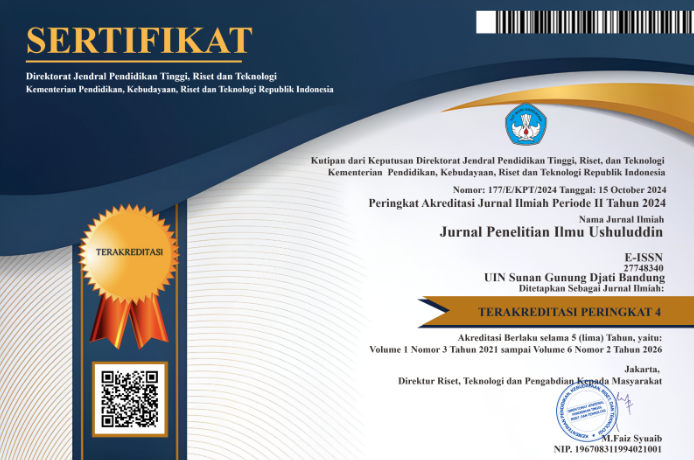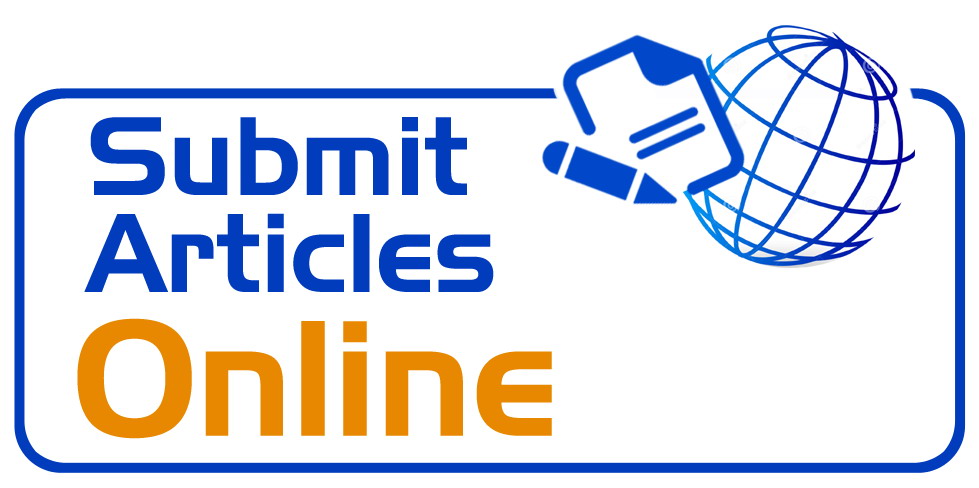Konten Hadis di Media Sosial: Studi Content Analysis dalam Jejaring Sosial pada Akun Lughoty.com, @RisalahMuslimID, dan @thesunnah_path
DOI:
https://doi.org/10.15575/jpiu.13580Keywords:
Content analysis, Hadith content, Social mediaAbstract
This research is motivated by the fact that the forms of hadith content that are spread on Lughoty.com, @RisalahMuslimID, and @thesunnah_path accounts are not always complete in the structure of a hadith and are not always considered authentic. This study aims to discuss the content of hadith on social media in social networks Facebook, Twitter, and Instagram with the sample accounts Lughoty.com, @RisalahMuslimID, and @thesunnah_path. This research is a qualitative type through a literature study that analyzes hadith content on social media using content analysis methods. The results and discussion of this study are an understanding of contextualization of hadith in the 21st century with technological advances in the information sector, and the form of hadith content on Lughoty.com, @RisalahMuslimID, and @thesunnah_path accounts does not always have a complete structure in a hadith. This study concludes that the hadith content found on social media in the Facebook, Twitter, and Instagram social networks on the Lughoty.com, @RisalahMuslimID, and @thesunnah_path accounts are not always judged to be authentic or hasan nor are all hadiths found on social networks. have completeness so that it is necessary to re-examine the obtained hadith to find the truth about the quality of a hadith.References
al-'Ashqalani, I. H. (1326). Tahdzibul Tahdzib. Al-Hin: Mathbu'ah Dairoh Ma'arif an-Nadlomiyyah.
al-Ashqalani, I. H. (1986). Taqribut Tahdzib. Suriah: Dar ar-Rasyid.
Al-Ayyubi, M. Z. (2019). Etika Bermedia Sosial Dalam Menyikapi Pemberitaan Bohong (Hoax) Perspektif Hadis. Jurnal Studi Ilmu-ilmu Al-Qur'an dan Hadis, 19(2), 148-166.
al-Qardhawi, Y. (1999). Bagaimana Memahami Hadis Nabi SAW. Bandung: Karisma.
Aris, A., & Iskandar, I. (2016). Tinjauan Komunikasi Islam Tentang Dampak Jejaring Sosial Facebook (Kasus pada Mahasiswa Stain Parepare. KOMUNIDA: Media Komunikasi dan Dakwah, 6(2), 62-81.
Asur, S., & Huberman, B. A. (2010). Predicting the Future With Social Media. Social Computing Lab, 1.
Darmalaksana, W. (2004). Hadis di Mata Orientalis: Telaah atas Pandangan Ignaz Goldziher dan Joseph Schacht. Bandung: Benang Merah Press.
Darmalaksana, W. (2020). Formula Penelitian Pengalaman Kelas Menulis. Kelas Menulis UIN Sunan Gunung Djati Bandung, 1-8.
Darmalaksana, W. (2020). Takhrij dan Syarah Hadis Agro Teknologi: Studi Tumbuhan Daun Senna dalam Infeksi Covid-19. Digital Library UIN Sunan Gunung Djati Bandung, 2.
Darmalaksana, W., Pahala, L., & Soetari, E. (2017). Kontroversi Hadis sebagai Sumber Hukum Islam. Wawasan: Jurnal Ilmiah Agama Dan Sosial Budaya, 2(2), 245-258.
Dawud, A. (1998). Sunan Abu Dawud. Beirut: Dar Ibn Hazm.
Edosomwan, S., Prakasan, S. K., Kouame, D., Watson, J., & Seymour, T. (2011). The history of social media and its impact on business. Journal of Applied Management and entrepreneurship, 16(3), 79-91.
Fahmi, R. M. R., Aeres, I., Wibawa, I. M. C. T., & Dalimunthe, R. P. (2021). A Silaturahmi Melalui Media Sosial Perspektif Hadits. AL-HIKMAH (Jurnal Pendidikan dan Pendidikan Agama Islam), 3(2), 214-225.
Fahrimal, Y. (2018). Netiquette: Etika Jejaring Sosial Generasi Milenial Dalam Media Sosial. Jurnal Penelitian Pers Dan Komunikasi Pembangunan, 22(1), 69-78.
Ferdiansyah, H. (2017, Desember 1). Pembagian Hadits Ditinjau dari Kualitasnya. Retrieved from nuonline: https://islam.nu.or.id/post/read/83811/pembagian-hadits-ditinjau-dari-kualitasnya
Ferlitasari, R. (2018). Pengaruh Media Sosial Instagram Terhadap Perilaku Keagamaan Remaja (Studi pada Rohis di SMA Perintis 1 Bandar Lampung) (Doctoral dissertation, UIN Raden Intan Lampung).
Handoko, K. K. (2017). Evaluasi Praktik Corporate Social Responsibility Dengan Konsep Ideal Global Reporting Initiative Pada Perusahaan-Perusahaan Yang Terdaftar Di Bursa Efek Indonesia Pada Tahun 2015 (Doctoral dissertation, Universitas Katolik Soegijapranata Semarang).
Hibban, I. (1973). Ats-Tsiqat. Abad: Da'irah al-Ma'arif al-'Utsmaniyyah bi Haidar.
Ismail, M. S. (1994). Hadis Nabi yang Tekstual dan Kontekstual: Telaah Ma'anil al-Hadits tentang Ajaran Islam yang Universal, Temporal dan Lokal. Jakarta: Bulan Bintang.
Kosasih, E., Raharusun, A. S., Dalimunthe, R. P., & Kodir, A. A. (2020). Literasi Media Sosial dalam Permasyarakatan Moderasi Beragama dalam Situasi Pandemi Covid 19. Digital Library UIN Sunan Gunung Djati Bandung, 3.
Luthfie, N. (2016, November 2). Menyaring Informasi di Media Sosial. Retrieved from tirto.id: https://tirto.id/menyaring-informasi-di-media-sosial-b1np
Mayfield, A. (2008). What is Social Media. Indian Strategic Knowledge Online, 79.
Mulyati, A. (2014). Panduan Optimalisasi Media Sosial untuk Kementrian Perdagangan RI. Jakarta: Pusat Humas Kementrian Perdagangan.
Muslim, I. (1993). Shahih Muslim. Beirut: Dar al-Fikr.
Saputra, T. A., & Suryadilaga, M. A. (2020). Perkembangan dan Kesahihan Hadis dari Awal Islam Hingga Zaman Post Truth. Jurnal Ilmiah Al-Mu'ashirah.
Soetari, E. (1994). Ilmu Hadits. Bandung: Amal Bakti Press.
Solahudin, M. A., & Suyadi, A. (2009). Ulumul Hadis. Bandung: CV Pustaka Setia.
Sosiawan, E. A. (2020). Penggunaan situs jejaring sosial sebagai media interaksi dan komunikasi di kalangan mahasiswa. Jurnal Ilmu Komunikasi, 9(1), 60-75.
Sumadi, E. (2016). Dakwah dan Media Sosial: Menebar Kebaikan Tanpa Diskrimasi. Komunikasi Penyiaran Islam, 1(1), 173-190.
Susiadi, A. S. (2014). Ijma’dan Issu Kotemporer. ASAS, 6(2).
Syifana, D. I., & Pratama, F. (2021). Perkembangan Kajian Hadis Di Indonesia Pada Abad 20-21 M. Jurnal UIN Sunan Ampel Surabaya.
Umara, A. F. (2021, Januari 19). Hadis Sahih, Hasan, dan Dhaif. Retrieved from Asosiasi Ilmu Hadis Indonesia: https://www/asilha.com/2021/01/19/hadis-sahih-hasan-dan-dhaif/
Westerman, D., Spence, P. R., & Heide, B. V. (2012). A social network as information: The effect of system generated reports of connectedness on credibility on Twitter. Computers in Human Behavior.
Yusrintosepu. (2018, April 23). Media Sosial & Jejaring Sosial (Perbedaan dan Klasifikasinya). Retrieved from slideshare: https://www.slideshare.net/yusrintosepu/media-sosial-jejaring-sosial-perbedaan-dan-klasifikasinya
Downloads
Published
Issue
Section
License
Authors who publish in Jurnal Penelitian Ilmu Ushuluddin agree to the following terms:
- Authors retain copyright and grant the journal right of first publication with the work simultaneously licensed under an Attribution-ShareAlike 4.0 International (CC BY-SA 4.0) License that allows others to share the work with an acknowledgment of the work's authorship and initial publication in this journal.
- Authors are able to enter into separate, additional contractual arrangements for the non-exclusive distribution of the journal's published version of the work (e.g., post it to an institutional repository or publish it in a book), with an acknowledgment of its initial publication in this journal.
- Authors are permitted and encouraged to post their work online (e.g., in institutional repositories or on their website) prior to and during the submission process, as it can lead to productive exchanges, as well as earlier and greater citation of published work (See The Effect of Open Access).












